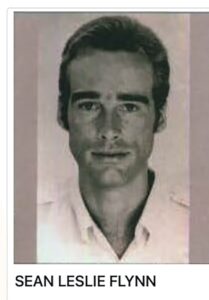 In memory of the lost, but not forgotten! Sean Leslie Flynn–April 6, 1970!
In memory of the lost, but not forgotten! Sean Leslie Flynn–April 6, 1970!
— ILIKEFLYNN
 In memory of the lost, but not forgotten! Sean Leslie Flynn–April 6, 1970!
In memory of the lost, but not forgotten! Sean Leslie Flynn–April 6, 1970!
— ILIKEFLYNN
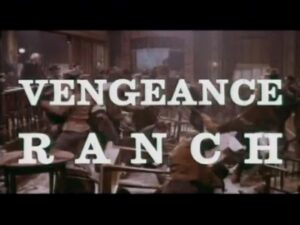
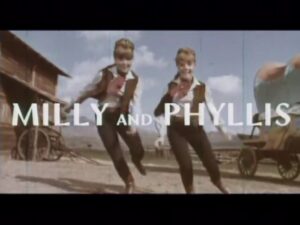

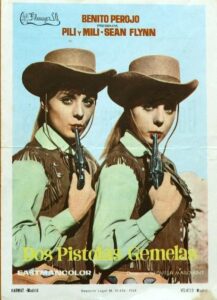
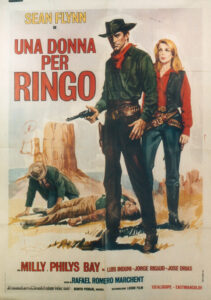
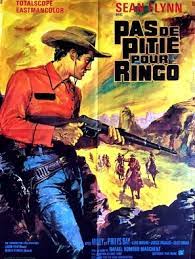
In 1965, Sean Flynn had agreed to go to Tabernas, Almeria, Andalucia, Spain to film a movie (which would use the same sets used for Clint Eastwood’s film, “For a Few Dollars More”) with the Spanish twin performers “Pili y Mili”. The film, a Spanish-Italian co-production was to be a western titled, “Dos Pistolas Gemelas”(“Twin Pistols”) for its Spanish language release in 1966 and “Una Donna per Ringo”(“A Woman for Ringo”) for its Italian release also in 1966. The film would be dubbed into English and according to IMDb was released under several different titles in English. I have yet to see any English language prints of the film, but YouTube has a trailer for the film in English under the unlikely title of “Vengeance Ranch”. The trailer trying to sell the film as a rough and tumble western shows almost no scenes of the two musical numbers in the film featuring the twins Pili and Mili, (here listed as “Milly and Phyllis”). The book, “Spaghetti Westerns: the Good, the Bad and the Violent,,,” by Thomas Weisser compares the film to an Elvis Presley type musical because the twin sisters were known for their musical performances and they sing and dance in the film. In my original review of the film for my article, “The Forgotten Films of Sean Flynn, Son of Errol Flynn”, I had labeled the film as “unwatchable” due mainly to the fact that every time I tried to watch it; it put me to sleep. As YouTube now has a better copy of the film than the one I first viewed, I was able to watch it again and this time I was able to stay awake. [The version on YouTube is in Spanish only as was the version I initially watched for my article.] The twins are mildly entertaining as a singing and dancing duo, especially when in one scene they dance a well choreographed version of the “Can Can” dance. Sean is serviceable as the love interest for one of the twins and provides aid to the twins when needed against the “bad guys”. The film is not as “unwatchable ” as I previously thought, but is mildly entertaining.
It might work as a double feature with Errol’s 1950 film “Montana”; a western where Errol does a little singing.—A. R.
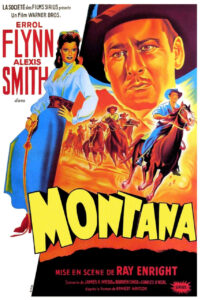
[It should be noted that Sean only agreed to do the film for the money, which he would use to finance his next project; to photograph the Vietnam War.]–A. R.
— ILIKEFLYNN
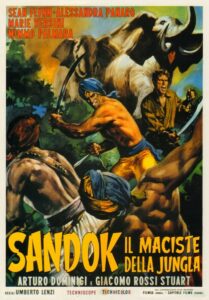
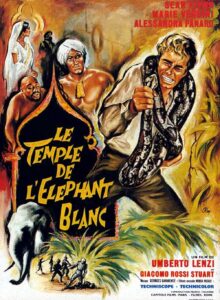
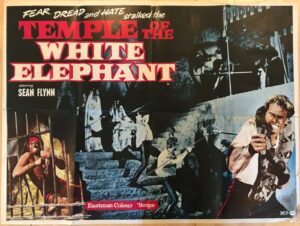
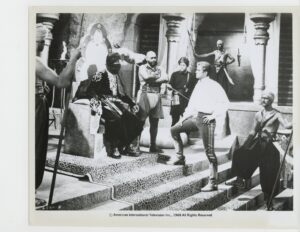
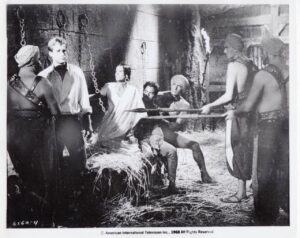
Late in 1963 Sean went on location to film his fifth starring role. A French-Italian co-production set in colonial India, the film was actually filmed in what was then Ceylon (now known as Sri Lanka,) In Italy the film would be released in 1964 under the title, “Sandok, Il Maciste della Jungla” (“Sandok , the Maciste of the Jungle”). In France, it would be released in 1964 under the title, “Le Temple de L’Elephant Blanc” (“Temple of the White Elephant”). It was to be directed by Umberto Lenzi, who would gain a reputation as a cult director after he helmed such films as “Seven Blood-Stained Orchids” and “Cannibal Ferox”. Sean’s co-stars would be: Alessandra Panaro, who was his leading lady in his first starring role in “The Son of Captain Blood”; although his leading lady in this film was to be Marie Versini, who was best known for her portrayal of “Nscho-tschi” in the popular (in Europe) West German “Winnetou” westerns and Mimmo Palmara, who was famous for his strongman roles in several Italian sword and sandal films, where he was usually the villain opposite Steve Reeves. (But here he would be a good guy on Sean’s side.) Also in the cast is Giacomo Rossi-Stuart (also known as “Jack Stuart”). Rossi-Stuart is also known for his roles in such films as: “Caltiki, the Immortal Monster”(1959), “Sodom and Gomorrah”(1962) and opposite Vincent Price in “The Last Man on Earth”(1964).
The plot of the film deals with the kidnapping of the British viceroy’s daughter (played by Panaro) and her fiancee, a British officer (played by Rossi-Stuart) by a fanatical murderous sect who worship “a white elephant.” Sean’s job is to rescue the two. He is aided in his mission by Palmara, who is also Versini’s protector who is a princess out to rescue her brother who is also held captive by the White Elephant sect. [While the film would probably be a good double feature with Errol’s film, “Charge of the Light Brigade”,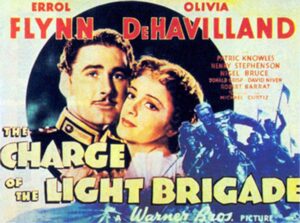
it has more in common with the 1939 film “Gunga Din”, i.e. the murderous cult.]
The film was released in the UK in 1966 under the title, “Temple of the White Elephant” where it mostly received bad reviews. The film made it to the US sometime in either 1966 or 1968. Released to US television syndication by American International Television, the television arm of American International Pictures. In the English language prints Sean dubs his own dialogue.
While not a great film and as per my review in my article, “The Forgotten Films of Sean Flynn, Son of Errol Flynn”, Sean looks good in uniform. The film does have plenty of action and does make for a good matinee type movie. It has a great score and is in glorious technicolor. It also makes great use of its lush location. The French language version can be found on YouTube, so you can judge for yourself for those who are interested. As for Sean, after completing this film, he went into what some have called his “Great White Hunter” phase, when he traveled to Pakistan, where he killed a tiger which had taken the lives of three woodsmen and received a certificate of extreme gratitude from the Pakistani government. He then went on to Africa where he tried his hand as a safari guide and big-game hunter. He also spent time as a game warden in Kenya. In need of money he completed three more films before becoming a photojournalist and war correspondent in Vietnam and lost his life in Cambodia in 1970. –A. R.
— ILIKEFLYNN
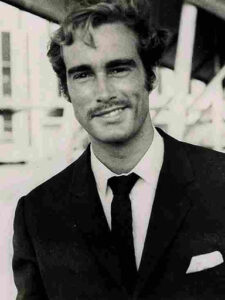
Remembering Sean on what would have been his 81st birthday!
While there is still a mystery surrounding his demise and final resting place. He and other fallen heroes will never be forgotten.–A. R.
— ILIKEFLYNN
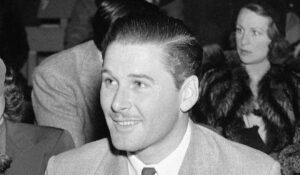
Beginning at 8:00pm April 4 and thereafter every Monday evening @ 8:0pm in April, 41 of Flynn’s movies will be shown beginning with “Captain Blood” and ending with “Too Much, Too Soon” and all his best in-between. Check the TCM website for a more exact schedule.–A. R.
— ILIKEFLYNN
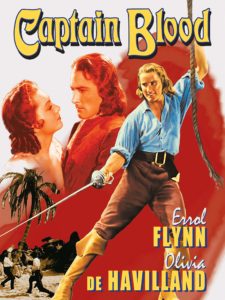
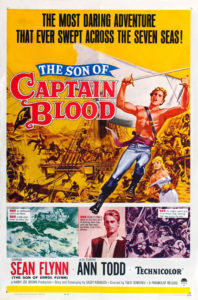
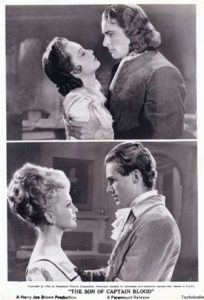
Here is a double feature that is obvious. The film that made a 26 year old Errol a star and the film that launched his 20 year old son’s European movie career.
What can be said about “Captain Blood” that has not been already said. Every one on this blog should have this film in their collection or they are on the wrong blog. This film is available in its original B & W version, although I personally enjoy the computer colorized version. (Yes I know it’s sacrilege to prefer colorization, but this version was done so well and let’s face it, if color was not so expensive and had been perfected at the time the movie was made it would have been made in color.)
When Sean made his starring debut, he had trained with stuntman and actor Jock Mahoney. Also stuntman extraordinaire Yakima Canutt had acted as second unit director on this film. While he excelled in the stunt work he did in TSOCB, his acting showed his inexperience in front of the camera. In a review of the film that appeared in “Variety” (5/18/64), it was said, “that when he learns to act he could be a popular screen personality.” Aside from that, the film has plenty of action and a lovely female lead in the form of Alessandra Panaro. It is also timely with the early civil rights movement because of its depiction of slavery. While it is not available on DVD, here in the U. S., it is available to watch on YouTube in English in a pan and scan version and also in Spanish with fan produced English subtitles. The Spanish version is in a wide screen aspect that shows off its original Dyaliscope aspect. (The wide screen process that was popular in Europe in the sixties.) So here is a fine double feature to enjoy while you are at home.–A. R.
— ILIKEFLYNN
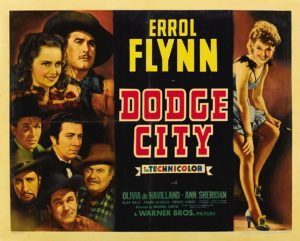
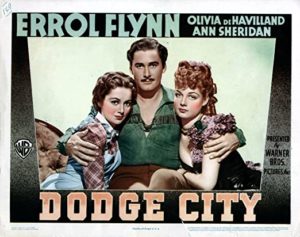
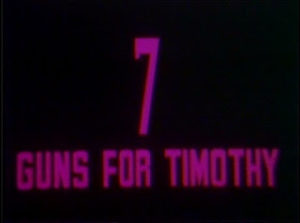
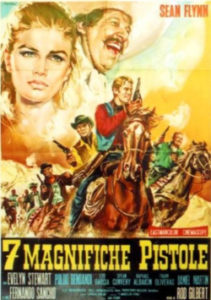
When I first picked up a copy of “My Wicked, Wicked Ways”, I was not that familiar with who Errol Flynn was as I did not remember having seen “Adv. of Robin Hood”, but I remembered the one about the guy who cleans up a town as one of my favorites from childhood. “Dodge City” may not be on every one’s list as a classic western, but it is definitely one of the top three favorite westerns on my list. ( Along with “The Searchers” & the original “The Magnificent Seven”).
Errol always felt he was miscast in westerns, but Wade Hatton is one of those characters that fit with the types of heroes he portrayed. He also said his westerns feature a scene where it is explained how he came to be out West. In “Dodge City” it is one of the best scenes when Dusty played by Alan Hale explains to Col. Dodge how Wade came to be out West.
Sean in his “spaghetti western” “Sette Magnifiche Pistole” (“Seven Magnificent Guns” aka “Seven Guns for Timothy”) plays a tenderfoot and intellectual man of peace, who has inherited a gold mine sought after by villain, Rodrigo Rodriguez (played by popular Spanish actor, Fernando Sancho) who will stop at nothing to force Sean to deed him the mine. The foreman of Sean’s mine enlists the aid of four former soldiers who served under him to train Sean to be a rough and tough hombre and go up against Rodriguez. At first Sean is reluctant, but when his pet dog is killed after a raid by Rodriguez on Sean’s ranch he gets with the program. Standing by her man as Sean’s love interest is Italian beauty, Ida Galli. Also on hand is Spanish actor, Daniel Martin who was a staple in these Euro Westerns as one of the seven guns along with the five mentioned above.
“Dodge City” is available on DVD and if you do not have this film in your collection you can not call yourself a fan of Errol Flynn. “Seven Guns for Timothy” is the only film of Sean’s available in English on legitimate DVD in the U.S. It is available as one of many euro westerns in the collection, “10,000 Ways to Die: The Spaghetti Western Collection”.–A. R.
— ILIKEFLYNN